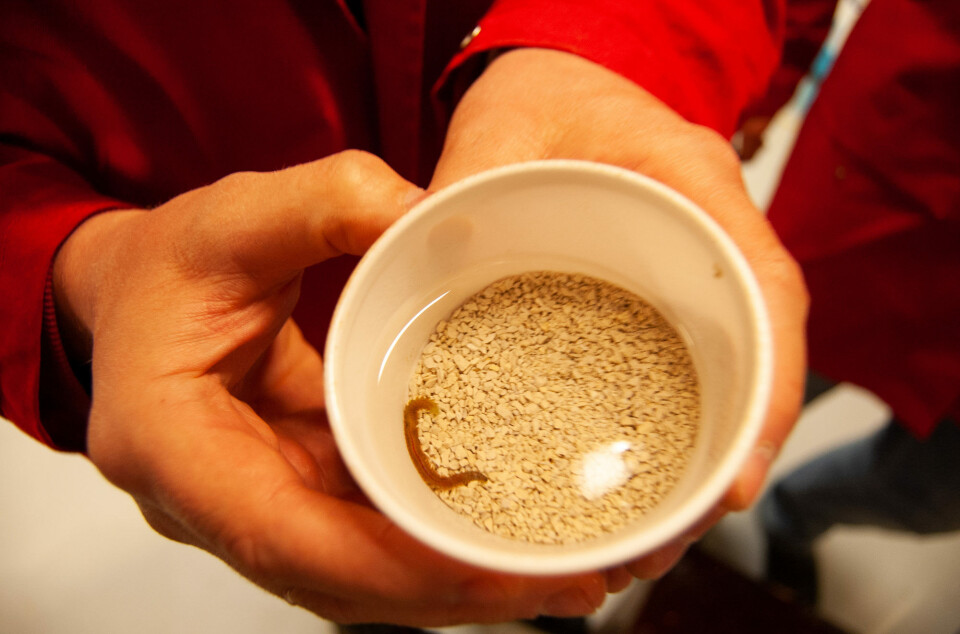THIS CONTENT IS BROUGHT TO YOU BY SINTEF - read more

Is it safe to feed farmed salmon with bristle worms raised on fish waste?
It is currently prohibited to provide animals with feed derived from the same animals’ own value chain. But this legislation is not based on science.
Researchers have previously demonstrated that bristle worms can flourish and grow on the sludge derived from farmed fish.
There is now an ongoing debate about whether these same bristle worms can be fed to farmed salmon.
But how safe is it really to allow salmon to feed on bristle worms that have been feeding on excrement sludge derived from the salmon themselves? A research team has been looking into this as part of a project called SecureFeed.
“We’re analysing data that can tell us how safe this is in relation to contamination by bacteria and viruses, as well as prion diseases resulting from cannibalism,” says Andreas Hagemann.
He is a researcher at SINTEF.
“We’re also looking into the accumulation of heavy metals, environmental toxins, and drug residues,” he says.

Challenging the regulations
Hagemann describes his team’s research as a milestone on the road towards a more sustainable, circular value chain operating in the aquaculture sector.
It is currently prohibited to provide animals with feed derived from the same animals’ own value chain.
“EU legislation is not based on science, but on a precautionary principle established following cases involving prion diseases, in particular so-called ‘mad cow’ disease, that were recorded way back in the 1980s. Our aim is to identify what risks really exist, and to challenge the existing regulations,” Hagemann says.
Major impact
Any changes to the regulations will have a major impact. Researchers have calculated that bristle worms produced from Norwegian salmon farm sludge may constitute between eight and nine per cent of the feed required for the industry to achieve its target of one million tonnes of additional salmon production in 2030.
“In 2019, Norwegian salmon farms produced 500,000 tonnes of excrement sludge. In theory, this represents enough raw material to raise about 150,000 tonnes of bristle worms,” the researcher says.
“The bristle worm will also be a very nutrient-rich feed for farmed salmon because it contains long-chain, polyunsaturated omega-3 fatty acids.”
More content from SINTEF:
-
How Svalbard is becoming a living lab for marine restoration
-
New study: Even brand-new apartments in cities can have poor indoor air quality
-
Fresh hope for patients with chronic inflammatory bowel disease
-
Testing a giant ship: May take five kilometres to stop
-
A robot is helping researchers hunt for the best cancer warriors
-
Locomotives that run on diesel can be electrified





































